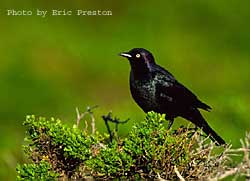|
CalPIF Bird Conservation Plans
now available:
Coniferous Forests: Version
1.1 available for download.  Coastal Scrub & Chaparral: Version
2.0 available for download and in print.
Coastal Scrub & Chaparral: Version
2.0 available for download and in print.  Desert: Version 1.0 available
for download.
Desert: Version 1.0 available
for download.  Grasslands: Version 1.0
available for download.
Grasslands: Version 1.0
available for download.  Oak Woodlands: Version 2.0 available
for download and in print.
Oak Woodlands: Version 2.0 available
for download and in print.  Riparian: Version 2.0 available
for download and in print.
Riparian: Version 2.0 available
for download and in print.  Sagebrush: Version 1.0 available for download.
Sagebrush: Version 1.0 available for download.  The Sierra Nevada Range: Downloadable
and HTML versions of the plan.
The Sierra Nevada Range: Downloadable
and HTML versions of the plan.  Habitat Enhancement Guide:
Available for download and in print.
Habitat Enhancement Guide:
Available for download and in print. 
The California Partners in Flight program has completed eight habitat
and bioregion based Bird Conservation Plans (BCP's) for Riparian,
Oak Woodlands, Coastal Scrub and Chaparral, Grasslands, Coniferous
Forests, Sagebrush, Desert, and the Sierra Nevada Bioregion. These
BCPs are for every land manager and researcher interested in improving
habitat for landbirds. These plans are dynamic documents that will
follow a continous process of developing and updating conservation
recommendations for California's habitats based on the latest scientific
monitoring and research data. Combined with the associated CalPIF
study areas database and focal species breeding
status database, these plans provide the foundation for adaptive
conservation management in California's habitats.

Adaptive Conservation in California's
Habitats
In adaptive management, land managers implement science-based
recommendations through their restoration and management activities
and scientists monitor the consequent effects. As new data on the
impact of management activities on wildlife and native plants become
available, scientists revise managment recommendations and managers
amend their work plans accordingly. Thus, scientists and managers
work together to create a steady feedback loop and consistently
improve their methods for conserving native habitats and species.
For more information on Adaptive Management, please read the
Guide
to Adaptive Conservation Planning by PRBO Conservation Science.
Population Objectives
California Partners in Flight seeks to develop population targets
that will guide avian and habitat conservation efforts and provide
them with a gauge of success. Although ambiguous and based on assumptions
difficult to test, numerical population targets provide a compelling
means of communicating with the public and policy makers. Furthermore,
they provide: 1) monitoring objectives and an evaluation procedure
of project success ("accountability"); 2) ranking criteria
for project proposals that allow reviewers to determine which sites
or projects will be more advantageous for a particular species or
suite of species; 3) current data for scientifically sound biological
objectives; and 4) integration and comparison with population objectives
of larger regional, national, and international schemes.
Population targets for California Partners in Flight focal species
can be found within the individual plans. The Western Purple Martin
Working Group has recently developed population objectives for the
Pacific Coast population of Western Purple Martin. Read
more here.

BCP Implementation
BCPs have now been distributed to over 130 different agencies and
organizations. There are numerous implementation examples for these
habitat-based bird conservation plans. The following are a select
few:
USDA Forest Service biologists use the BCPs to address
management concerns for many of the focal species identified in
the plans. USFS has specifically used the Sierra Nevada Bioregion,
Coniferous Forest, and the Oak Woodland plans to help identify appropriate
bird species to include on the Management Indicator Species list
revision efforts.
US Fish and Wildlife Service Private Lands Office has used
primarily the Riparian Plan in planning for Partners for Fish and
Wildlife habitat restoration program project selection and construction/implementation.
The Sonoma County Agricultural Preservation and Open Space
District uses the information within several of the BCPs to
guide land acquisition.
Prunuske Chatham, Inc., an environmental consulting and
ecological restoration firm, uses the Riparian Plan as a resource
for their environmental assessment documents and for the management
and restoration recommendations.
The Department of Defense is referencing the BCPs in the
revision of their Integrated Natural Resource Management Plans.
If you would like to contribute to this list of BCP uses,
please email the CalPIF Coordinator, Ryan DiGaudio (rdigaudio@prbo.org).
Click here to download a Powerpoint
presentation about the CalPIF Bird Conservation Plans
|


